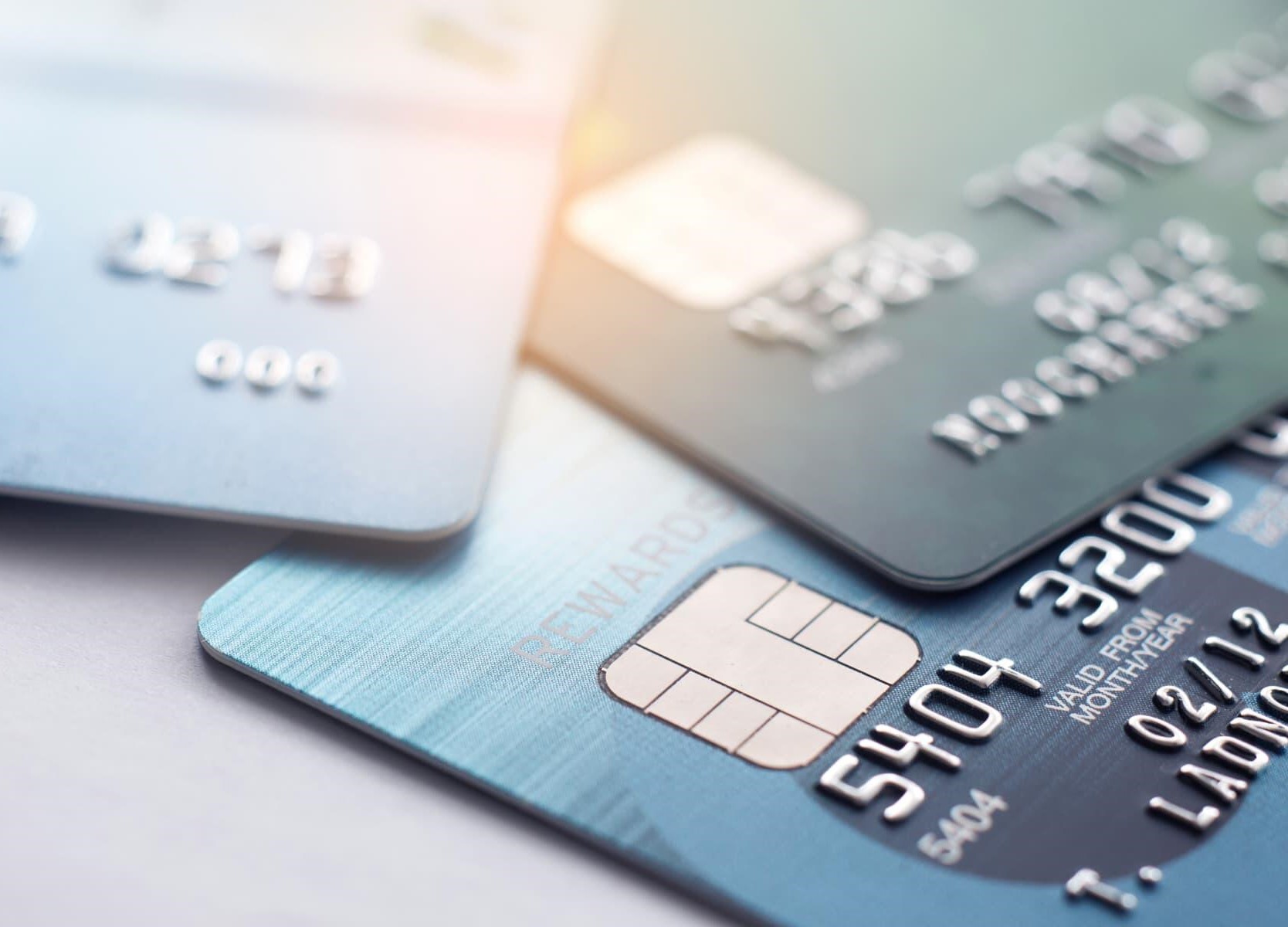Why was a payment declined? The top 8 reasons card transactions fail

Have your customers ever complained to you about a card being declined? Perhaps they’ve added an item to an online shopping cart but had their card payment declined at the checkout? Or they’ve tried paying for a big-ticket item and experienced difficulties?
Whatever the circumstances, failed card transactions can be frustrating, embarrassing, and not to mention stressful for consumers.
However, did you know that most of the time, the issue is on their side? Your customers should be made aware that declined payments are a common experience - and have many different causes.
It’s important to be able to explain these issues, and how best to overcome them, to your customers. After all, knowing why their card payment was declined and how to prevent it from happening again in the future will help ensure their next transaction goes smoothly. Here are the most likely reasons consumers’ payments failed:
1. They entered their card details incorrectly
Incorrectly entered card details are one of the most common reasons card transactions fail. When making a purchase online using a browser or mobile app, it's easy to add an extra digit, incorrect security code or expiry date. If there isn’t an obvious numerical error, the billing address may be outdated.
Although incorrectly entered card details are easy to fix, it's essential people take the time to double-check their information before hitting the checkout button, as multiple failed attempts could result in their card being frozen.
2. Their transaction was flagged as fraudulent
Sometimes, a customer’s card issuer — such as their bank or credit card provider — may flag a transaction as fraudulent. There are multiple reasons a payment could be declined for suspected fraud, for example, when someone has used the card without consent. However, it usually happens when someone makes a large purchase or attempts to pay for an item that falls outside their regular spending habits.
For example, if a card owner attempts to pay for an expensive holiday, the transaction may be flagged as fraudulent. Likewise, the card issuer could become suspicious if a transaction is made at a gambling site or overseas e-commerce store.
Usually, a card issuer will try to notify the customer via phone, SMS, or app if they have declined a payment due to suspected fraud. Once they’ve confirmed the purchase was legitimate, a second try will usually process without a hitch.
3. They're travelling
Purchases made while travelling may also be flagged as fraudulent. It doesn't matter whether someone is paying for a meal or buying souvenirs; their card issuer may well block a transaction if they believe the card is being used somewhere it shouldn't. The simple remedy to this situation is for the cardholder to notify their bank or card issuer before they travel abroad. These days, many providers have dedicated sections within their apps or websites to notify them that a card is about to be used overseas.
4. Their card has expired or was deactivated
Attempting to use an expired or deactivated card will nearly always result in a transaction being declined. If a customer receives a new card in the mail due to their old one being expired, damaged or lost, they should activate it promptly and destroy the previous version.
5. They’ve reached their daily limit
Unlike credit cards, debit cards are limited to making purchases that can be covered by the account's balance. However, in many cases, a daily transaction limit also applies, usually to prevent fraudsters from making dozens of unauthorised transactions. If someone has used a card for multiple purchases, they may find themselves hitting their daily limit.
6. They’re using an unsupported card type
Although modern e-commerce checkouts accept a wide range of payment types, not every merchant will accept a particular card. For example, attempting to use a Visa payment card at a checkout that only supports Maestro will automatically trigger a decline.
7. There's a hold on their card
If somebody is paying for things like hotels or rental cars, companies may put a hold on their card that will be lifted when they return the vehicle or check out of their accommodation. This practice is commonly known as pre-authorisation. If a customer plans to use multiple services that may place holds on their card, they must ensure they have enough funds in their account or a sufficient credit limit to accommodate them.
If possible, customers should use a two-card strategy when they know they may face multiple holds — such as when travelling. For example, it could be useful to use their bank or credit card for hotel and rental purchases, while using a prepaid travel card for smaller transactions.
8. They have insufficient funds
Sometimes, a transaction may be declined because a customer has insufficient funds in their account. Ensuring they keep track of expenses and the funds in their accounts is vital. Most banking establishments or card issuers provide information in their apps to keep track. In addition, keeping track of overdraft use and how much money is left on a prepaid card is essential, as going over the limit is a surefire way for someone to have their transactions declined.
Limits, expenses, and the funds a person has left on their card can typically be found in a mobile app. Likewise, setting up notifications in the issuer's app might help them keep track of, or alert them when running close to their limits.
Should a customer find themselves close to their overdraft limit or in trouble, they can contact their card issuer for help — although they should keep in mind the dangers of getting into unmanageable levels of debt.
What to do if a card is declined
Declined cards are an annoyance, but issuers usually do it for the cardholder’s protection. The next time a customer is faced with a declined transaction, they should keep the following tips in mind:
When a transaction fails, the first step is to stay calm. Customers should check they've entered the correct information before submitting their payment again, and if they use an accompanying app, check their notifications. Providers often ask for a transaction to be approved before it completes, so the payment may not have actually failed, but simply be waiting for further confirmation. Most card issuers and payment services providers mandate this further confirmation (known as 'Strong Customer Authentication') which, again, is to protect customers from potential fraud.
Today, the popularity of smartphones and digital payments means we have multiple options for paying for goods and services. While customers should always call their provider or investigate any app notifications when a card payment is declined, having another payment method on hand is always handy. Just remember that options like Apple Pay, Google Pay and PayPal may also be tied to the same card as the one that has just been declined.
If a decline happened because their issuer suspected fraud, they’ll probably receive an SMS or call to confirm the purchase was legitimate. Card issuers will never ask for PINs or other sensitive information. They'll often just ask for the cardholder's date of birth and have them confirm a list of recent transactions.
Finally, it's important to remember that some failed payments are the merchant's responsibility. If the bank or card issuer has confirmed nothing was wrong, it may be due to a technical issue at the checkout. So, having checked and tried to submit the payment on multiple occasions, the customer should contact the merchant, as they can advise if there is something wrong on their side and offer support.
Be proactive
By proactively managing their cards, customers should be able to avoid the vast majority of declined transactions:
- Turn on app notifications: If their banking or card app is set up correctly, they’ll often be alerted of payment-related issues or be asked to confirm a transaction before it's declined. In addition, apps make it simple for customers to check their balance and spending habits.
- Ensure they have sufficient funds: To prevent a card from being declined, people should always ensure they have enough money in their account by setting up automated top-ups or direct debits from their bank. If they have an overdraft, they need to check they’re within their limit. They should also be mindful if there are multiple holds on their account.
- Notify the issuer before travelling: Customers should never use their card in a foreign country before warning their issuer they plan to go abroad. Today, many apps allow people to do this in a few taps, but if that's not possible, they are advised to give customer services a call.
In conclusion
Card declines are inconvenient and frustrating for your customers, but they can rest assured most banks and issuers have their safety in mind whenever they prevent a transaction. In 2023, UK consumers lost a total of £1.17 billion to fraud, so the fact that their card provider has spotted suspicious activity should be a comfort rather than an annoyance.
So, if you have a customer who finds their card payment declined at checkout, tell them to stay composed, check their app, and ensure they’ve entered the correct information. If all else fails, a quick call to the card issuer should normally resolve the matter without too much drama.

